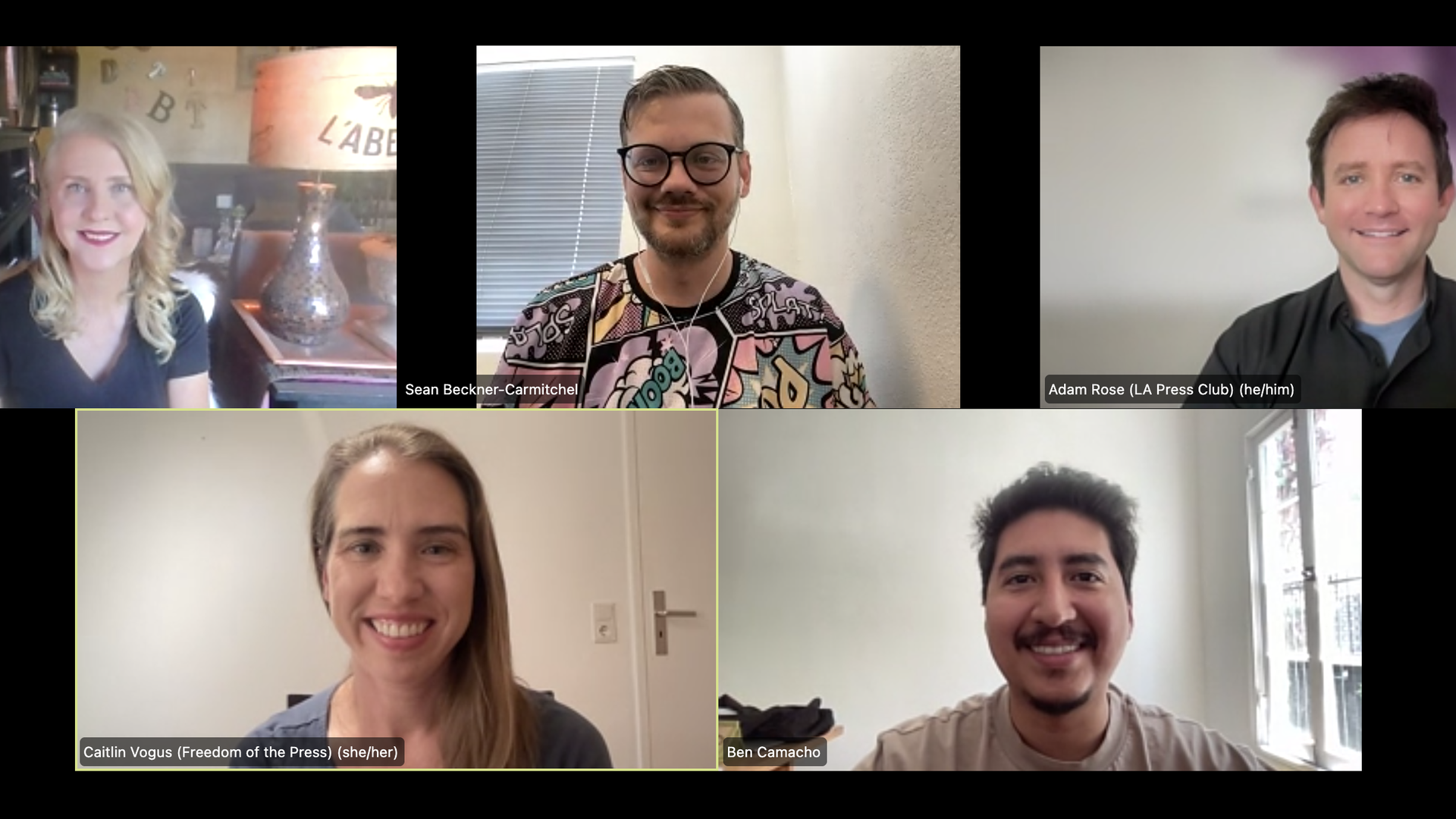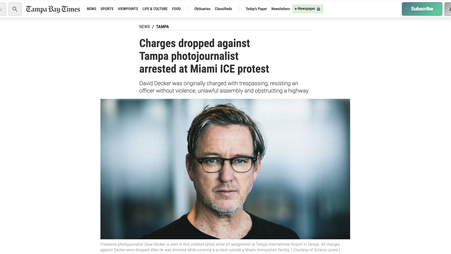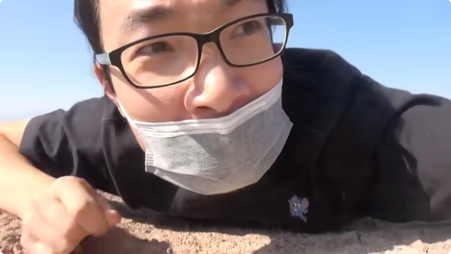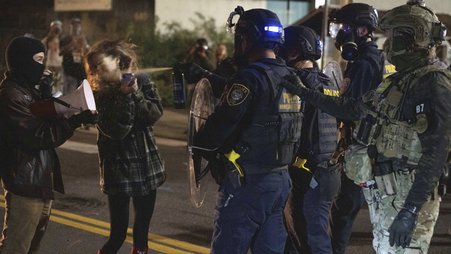When journalist Ben Camacho set out to cover protests in Paramount, California, he did not expect to become a part of the story he was reporting. But that’s what happened after he was shot twice with crowd-control munitions by Los Angeles County sheriff’s deputies June 7.
“As a reporter of color, there’s this dynamic where I’m out there on the field and I look like the majority of people that are protesting. … There’s this kind of other layer that I feel,” said Camacho, co-founder of The Southlander, during a Freedom of the Press Foundation (FPF) webinar July 9.
Despite having a press badge and camera around his neck, Camacho was hit in the knee and then in the elbow with “less-lethal” projectiles. The pain sent him into shock, screaming and scrambling for cover. The injuries left him unable to work for a week, with lingering pain in his knee and elbow that continues to affect him a month later.
Camacho shared his story alongside three other journalists during “Reporting under fire: Protests and press freedom in Los Angeles,” an event spotlighting a growing crisis in California’s streets and newsrooms.
Speakers Adam Rose, press rights chair and secretary of the Los Angeles Press Club, Sean Beckner-Carmitchel, an independent videographer, and Tina-Desiree Berg, a journalist for Status Coup, also spoke on the harassment, violence, and intimidation they faced in their own city while covering LA’s immigration protests.
They emphasized practical steps journalists can take to protect themselves while continuing to cover critical stories. Among the advice shared:
- Wear protective gear. Bring a gas mask and ballistic goggles, and keep your press pass clearly visible. Berg recommended wearing Kevlar leggings beneath pants for added protection.
- Travel with colleagues. Watching out for each other can make all the difference, especially if someone is injured.
- Be aware of your surroundings. Always assess your situation and be prepared to move quickly.
- Document everything. Keep records and collect evidence of any violations or incidents.
- Conduct a mental health check-in. Emotional and psychological impacts from covering trauma should not be overlooked. Camacho shared that he gauges how he’s feeling mentally each day before deciding whether to head out into the field.
- Utilize your resources. There are numerous training and mental health resources available to journalists. The Dart Center at Columbia University runs a Journalist Trauma Support Network. Many organizations, such as the LA Press Club, offer grants for journalists.
These precautions were shared alongside firsthand accounts, showing how deeply the panelists’ advice is rooted in their lived realities.
California has seen dozens of press freedom violations in 2025 alone, including detentions, assaults, and equipment seizures, according to the U.S. Press Freedom Tracker.
Although Rose was not physically targeted, he provided context from his role at the LA Press Club, highlighting the large number of press freedom violations in LA in the first weeks of June alone.
The incidents ranged from journalists being detained and kettled to more severe outcomes like hospitalization and life-changing injuries.
“We see these agencies acting lawlessly,” Rose said. “They are shooting journalists with ‘less-lethal’ munitions. They’re detaining and even arresting journalists simply for doing their job.”
The violence has unfolded despite legal protections. California’s Senate Bill 98 created Penal Code 409.7, barring California law enforcement from interfering with journalists’ work during protests.
Yet the reality on the ground tells a different story as federal law enforcement has been brought in.
Berg shared her experiences witnessing the protests that erupted in LA starting June 6, sparked by outrage over Immigration and Customs Enforcement detentions of asylum-seekers.
She said the early days of June protests were some of the most intense she’s ever seen, with multiple law enforcement agencies present in force, including the LA Police Department, the California Highway Patrol, the Department of Homeland Security, and the National Guard.
“This particular issue has drawn people from all walks of life and all age groups in large numbers,” Berg said. “When you have the large numbers, a large number of protesters out there, accompanied by all these various forms of law enforcement, it could be a more risky, dangerous situation.”
She witnessed police deploying tear gas into crowds, escalating tensions. To her, that weekend marked the beginning of a new wave of unrest.
“I knew at that moment that this was the start of something,” Berg said. “These things sort of just were compounded, and that weekend became, you know, what was the whole full-blown start of these protests.”
Beckner-Carmitchel also shared his encounters while covering protests in the LA area. A tear gas canister struck him in the head, exploded, and left him temporarily blinded and with a large hematoma.
Fortunately, he passed concussion protocols, but the potential for permanent injury was high.
Since then, he said he has been hit by plastic rounds and other projectiles at least three times.
“It’s been difficult to report under these conditions, and I’m sure everyone can agree,” Beckner-Carmitchel said.
But these journalists are not just recounting their stories, they’re seeking accountability. The LA Press Club, Status Coup, and Southlander are now joined in various lawsuits against the LAPD, the LA Sheriff’s Department, and the DHS, arguing their First Amendment rights were violated.
The stories shared during the webinar showed a troubling pattern: reporters targeted for simply doing their jobs of documenting the truth. And yet, despite injury, trauma, and intimidation, they continue to report.
“I get motivated when I’m told not to do something,” Beckner-Carmitchel said. “That’s why I became a journalist in the first place.”
This article was originally published by the National Press Club Journalism Institute here and is republished with permission.





